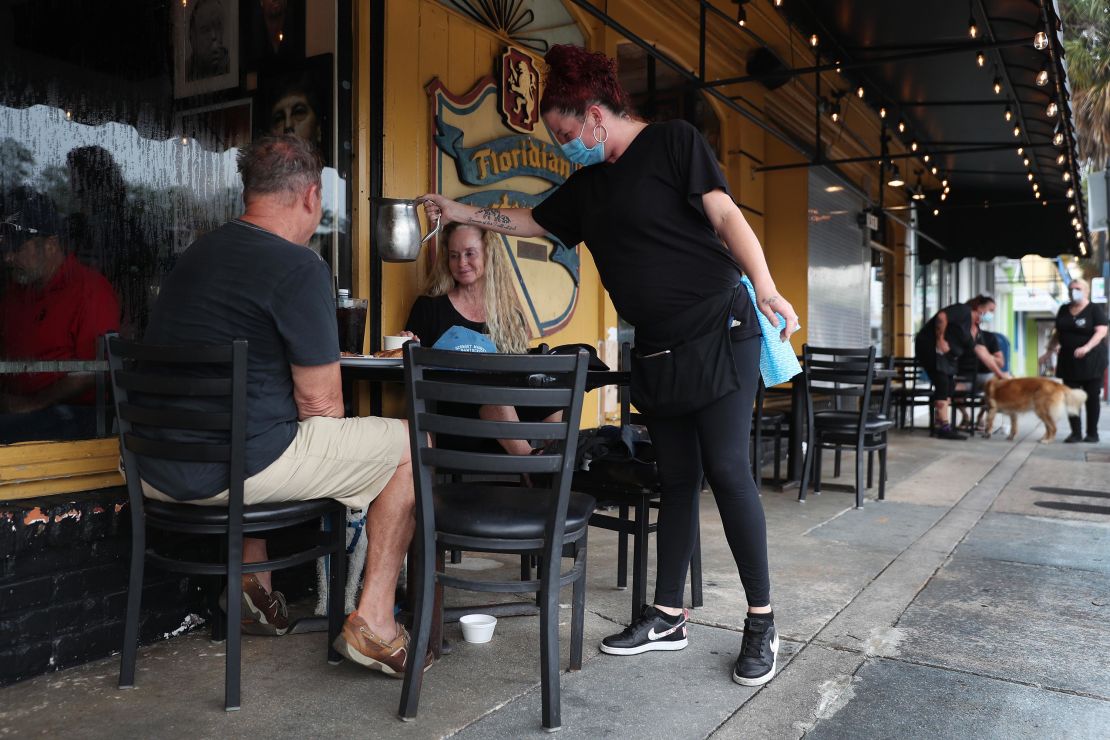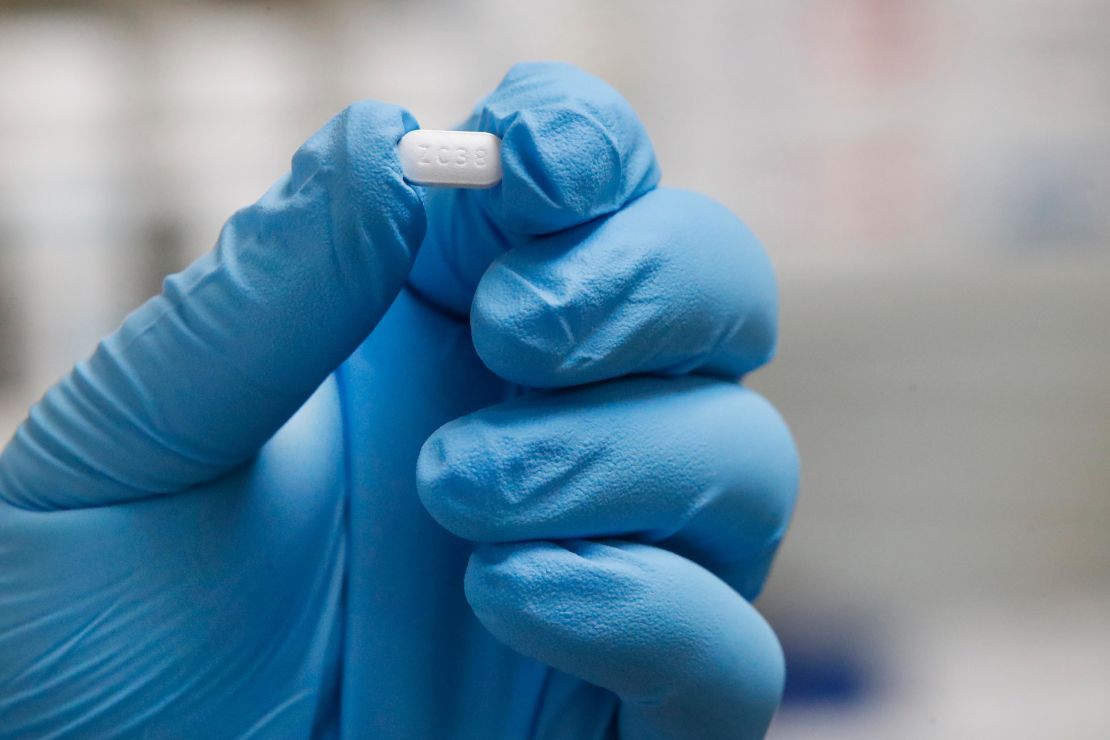Covid-19 is not mutating, health experts say, but that doesn’t mean it’s not dangerous.
So far, evidence does not show that the coronavirus is changing to become more severe or more transmittable, but complacency by people and local governments could increase its spread, World Health Organization infectious disease epidemiologist Maria Van Kerkhove said Wednesday at a news briefing.
Almost 20,000 new US cases were reported Wednesday, according to data from Johns Hopkins University, and officials warn that packed protests over the death in police custody of George Floyd could exacerbate the pandemic that has killed at least 107,175 people nationwide.
“I remain concerned about the public health consequences both of individual and institutional racism (and) people out protesting in a way that is harmful to themselves and to their communities,” US Surgeon General Dr. Jerome Adams said in an interview published Monday. “Based on the way the disease spreads, there is every reason to expect that we will see new clusters and potentially new outbreaks moving forward.”
Protesters should get tested, CDC director says
Oklahoma State linebacker Amen Ogbongbemiga tested positive for the virus after attending a protest, he tweeted Tuesday.
“Please, if you are going to protest, take care of yourself and stay safe,” he wrote.
“I do think there is a potential, unfortunately, for this to be a seeding event,” Centers for Disease Control and Prevention Director Dr. Robert Redfield said Thursday of the protests.
To prevent transmission, Redfield said people who attend protests should tell their loved ones that they were out in public and get tested within three to seven days.
The use of tear gas by police may help the virus spread, since it makes people cough, Redfield said during a House committee hearing on the coronavirus response.
New York state, long an epicenter of the US outbreak, reported 49 coronavirus-related deaths Tuesday, the lowest death toll since the pandemic began, Gov. Andrew Cuomo said Wednesday.
But in parts of the West and the South, spreading has continued.

CDC chief: Public health system weaknesses exposed
The coronavirus pandemic has “highlighted the shortcomings of our public health system that has been under-resourced for decades,” Redfield said Thursday.
That’s especially true in the field of information technology, said Redfield.
“Never has it been more clear that our nation’s public health IT infrastructure requires modernization, to support and collect reportable, reliable, comprehensive and timely data,” he told a House Appropriations Committee hearing on the Covid-19 response.
“When we confront any disease threat, CDC and public health departments must make real-time decisions based on real-time data. Data forms the roadmap, and it informs policy. Data is the backbone of any disease threat response,” he said.
Some numbers move in ‘right direction,’ others don’t
As US states push forward with reopening plans, nearly as many are seeing coronavirus caseloads trending upward as those where case numbers are declining, an analysis of Johns Hopkins data shows.
Nineteen states have averaged more new cases over the past week than the prior week, while 13 are holding steady and 18 are seeing a downward trend.
Louisiana is one of those downward-trending states and is set to begin Phase 2 of its plan to reopen the economy Friday, allowing businesses to open at 50% capacity, according to Gov. John Bel Edwards.
“Louisiana is slowly moving in the right direction, but we must continue to remain vigilant in the fight against COVID-19,” Edwards tweeted Wednesday.
Connecticut, which is seeing its lowest positive test rate in months, will allow in-person graduations with a limit of 150 people beginning July 6, Gov. Ned Lamont said.
Texas and Florida are still recording increasing weekly averages of new cases as they take steps toward reopening.
Almost all Texas businesses are allowed to operate at half capacity, Gov. Greg Abbott announced Wednesday evening. And much of Florida will enter Phase 2 of reopening on Friday, allowing businesses such as bars, movie theaters and bowling alleys to operate at half capacity indoors, Gov. Ron DeSantis announced Wednesday.

Fauci weighs in on schools
However, questions remain about when and how students can returns to the classroom.
That will depend on the communities the schools are in, Dr. Anthony Fauci, director of the National Institute of Allergy and Infectious Diseases (NIAID), told CNN Wednesday.
“I hesitate to make any broad statements about whether it is or is not quote ‘safe’ for kids to come back to school,” Fauci said. “When you talk about children going back to school and their safety, it really depends on the level of viral activity and the particular area that you’re talking about. What happens all too often – understandably, but sometimes misleadingly – is that we talk about the country as a whole in a unidimensional away.”
It is premature to begin talking about reopening schools, Fauci said, adding there could be many scenarios in the fall, including changing classroom layouts or having students alternate schedules.
Health experts are still working to understand exactly how the virus affects children.
A NIAID study will follow 6,000 people, both children and their families chosen from 11 cities over six months, to get further clarification on whether children are less likely to catch coronavirus than adults.

Large-scale trials of vaccines expected to start in July
National Institutes of Health Director Dr. Francis Collins told CNN that when the world eventually gets a coronavirus vaccine, it might require two doses to be fully effective.
“Obviously that’s not our favorite. It would be much better if this could all be done with a single injection,” Collins said.
Generally, with any vaccine, one dose is preferred for cost reasons, and also because people are less likely to show up twice to receive an injection.
Collins said the large-scale clinical trials of several experimental vaccines, expected to start next month, will reveal whether one or two doses will be necessary.
Study of potential treatment may continue
As the US continues to reopen, many are looking to treatments and vaccines that do not yet exist to keep an interacting public safe.
WHO’s Data Safety and Monitoring Committee recommended that the organization continue studying the drug hydroxychloroquine as a potential treatment, WHO Director-General Tedros Adhanom Ghebreyesus said during a Wednesday news briefing in Geneva.
Last week, WHO announced that it had temporarily paused the hydroxychloroquine arms of its trial due to concerns surrounding the drug’s safety.
The move was taken as a precaution while safety data was reviewed, but the mortality data did not show reasons to change the trial protocol, Tedros said Wednesday.
President Donald Trump said he took hydroxychloroquine last month, shortly after he found out his personal valet had been diagnosed with the coronavirus.
But science shows hydroxychloroquine is not effective as a coronavirus treatment, Fauci said last week, adding there’s likelihood of “adverse events with regard to cardiovascular.”
A University of Minnesota study showed that the drug does not help patients in the hospital, and its author said he told the President’s physician that no published research shows it is effective as a preventative measure either.
CNN’s Mirna Alsharif, Elizabeth Cohen, Maggie Fox, Annie Grayer, Sheena Jones, Janine Mack, Mitchell McCluskey, Joe Sutton, Theresa Waldrop and Amanda Watts contributed to this report.










